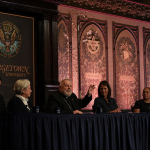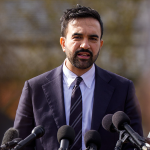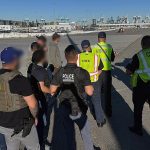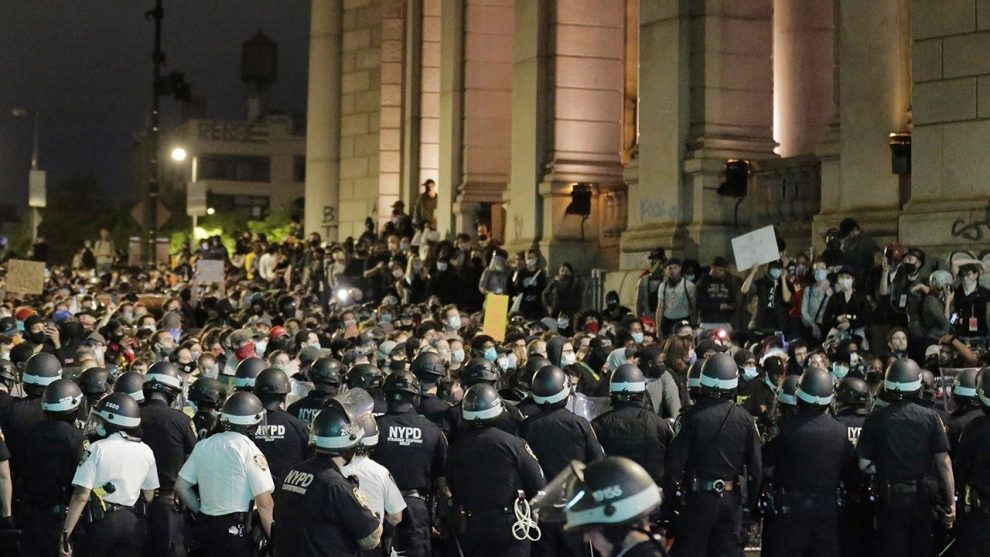Major cities across America, reeling from monthslong lockdowns because of the coronavirus crisis, are now being roiled by riots and protests — and businesses already buckling under the weight of the economic downturn are being hit even harder as a result.
“It’s a perfect storm. You have COVID, you have the marches and then you have the looters, three completely different things,” Helana Natt, executive director at the Greater New York Chamber of Commerce, told Fox News in an interview.
The two crises are interconnected in a uniquely harmful way. Not only are businesses being crushed under the weight of lockdowns and now widespread looting and unrest, but the coronavirus restrictions potentially have contributed to an even more dangerous situation once riots broke out. Many cities have been virtual ghost towns for months, contributing to a sense that, quite literally, nobody is minding the store.
Natt told Fox News she believes much of the looting could have been stopped if stores were full of people and communities that otherwise would protect them were not locked down.
“They wouldn’t have seen an empty store and what’s more important is that the people protesting peacefully would have seen that ‘hey this is my community, this is my neighborhood and we’re going to prevent you from looting it’ and I think the dynamic would have been completely different,” she said.
Indeed, much of America has been on lockdown since March in response to the novel coronavirus, a move initially done to slow the spread of the virus and “flatten the curve.” But with some states only now beginning to reopen, it also caused catastrophic economic damage. Tens of millions of Americans have been put out of work, while businesses across the country have shuttered.
Now it’s being combined with protests in response to the death of George Floyd in police custody in Minneapolis last week. Those protests have spread across the country and frequently escalated into violence and looting in places such as New York City, Atlanta and Washington, D.C.
Observers note that the lockdowns – bringing with them empty streets, empty stores, high unemployment, a well-documented spike in mental health issues, anger and angst – likely contributed to a tinder box that then was sparked by already-simmering tensions over racial injustice and police brutality. The video of Floyd’s death shocked the nation and brought thousands onto the streets in a call for justice that lawmakers on both sides of the aisle have largely backed.
But the accompanying riots and crime brought a second shock, leaving mayors, governors and federal officials scrambling to pinpoint who’s responsible.
“It doesn’t take a sociology Ph.D. to suspect that the unprecedented conditions the nation has been living under for more than two months have contributed to the anger apparent in the riots and violence,” a Wall Street Journal editorial said.
It’s an assessment shared by politicians both at the state and national levels.
“Here we are trying to get over the worst health care crisis we’ve had in over 100 years. In the middle of it, we’ve now got the worst social problem that we’ve had in maybe 60 or 70 years, and so this is a double whammy that we had better take stock of right away and decide how we get through this,” Rep. James Clyburn D-S.C., said on Wednesday.
“Two very different situations but both critical in and of themselves. Both then happening at the same time it’s then wrapped in an environment and a dynamic that is racially charged and politically charged — it makes it a very very perilous time in this country,” New York Gov. Andrew Cuomo said at a press conference Wednesday.
The Journal’s editorial board, meanwhile, pointed to the mass release of convicted criminals from jails, arguing this also contributed to violence. It noted that 1,500 were released in New York alone as part of the effort to stop the spread of the coronavirus. The board also cited the empty streets and stores as a contributor.
“The lockdowns also mean that the streets are emptier. The broken-windows theory of policing argued, among other things, that crime flourishes in places law-abiding citizens avoid. With commercial districts in places like New York frequented less by those trying to honor social distancing, it is easier for criminals to congregate,” the Journal board wrote.
Meanwhile, another open question is whether the mass protests will in turn contribute to a spike in coronavirus infection rates, thus prompting governors to consider lockdowns all over again.
While there are signs that the worst of the rioting may be over, and states are beginning to reopen – with New York City moving to “phase one” next week – businesses recovering from the one-two punch of a lockdown and then riots still have a long way to go.
Natt noted issues with Paycheck Protection Program (PPP) loans, and also unemployment benefits that may disincentivize workers who are making more on unemployment from returning to work, as well as the struggles businesses and merchants face trying to comply with still-strict social distancing practices as they reopen.
“I hope it’s not slow,” she said. ”I want all businesses to come back and I’m praying that they do, but I think it’s going to be difficult.”
Story cited here.
























